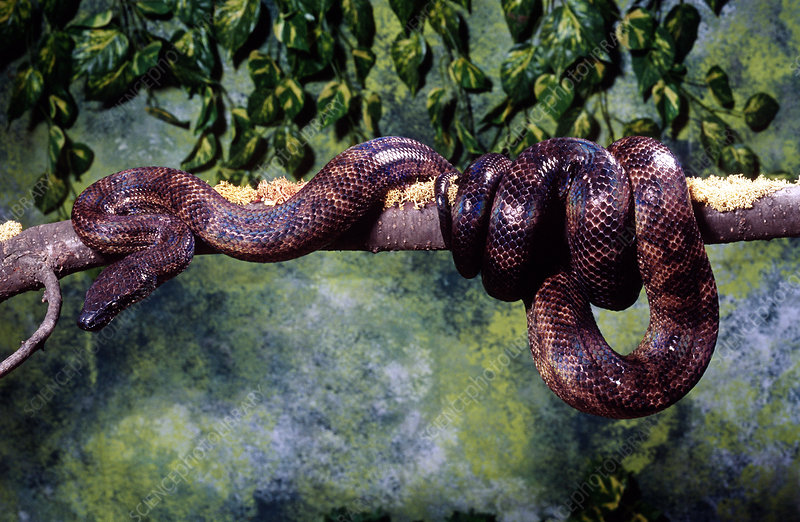ANIMAL: Puerto Rican Boa Chilabothrus inornatus Type of Animal: Boa/Python Habitat: Rocky habitats w/ or w/o trees, caves, light gaps, forests/forest edges, karst areas, plantations, wooded/rocky foothills, mountainous areas, drier areas, urban areas, mangrove forest, offshore cays Location(s): Puerto Rico Appearance: Ranges dull brown/dark gray to darker pale shade (sometimes very rusty brown) coloration w/ irregular parietal scales & dark dorsal blotches, juveniles reddish-brown Food/Diet: Small mammals, birds, lizards, amphibians, insects Status in Wild: Stable Conservation: Breeding in zoos, wildlife centers, & herpetoculture Lifestyle: Solitary Additional Info: Called: Male Female Young: Snakelet Group: Solitary Weight: Male: 0.3-3.22 lbs Female: 0.77-3.66 lbs Gestation: 5-6 months Life Span: 15-20 years Body Length: Male: 4.44-6.72 ft Female: 4.21-6.06 ft Young: 1.5 ft Tail Length: Male: 8.78-11.41 in Female: 9.25-10 in Main predators of adults are mongooses, cats, dogs, pigs, raptors, & boa constrictors. Pearly-eyed thrashers, red-legged thrush, & lizard cuckoos eat young. These snakes ovoviviparous, w/ young hatching inside mom’s body, coming out as 6-26 live young. They’re semiarboreal. Largest snake in Puerto Rico. While stable & fairly common in some areas, threats do loom-habitat loss, deforestation, invasive predators, hunting for oil from their fat, pet trade, agriculture, human harvesting for folk remedies/skin/meat, pollution, natural disasters, persecution, & competition w/ introduced species (especially Red-Tailed Boa Constrictors). Populations are increasing. Caves prime hunting territories due to plentiful bats living there (one of favorite foods), often catching them in mid-air. Active at night (nocturnal). Like all boas, they kill prey by constricting & swallowing whole. Sexually mature at 2 years old. They’re beneficial in controlling populations of pest species. Multiple males often mate w/ single female simultaneously. Mating can last a full day. Fun Fact(s): Also called Yellow Tree Boas even though they’re not yellow. Locally known as Culebron meaning large snake. During 1st few centuries of Spanish colonization, oil from fat was common export. They can be very defensive if need be & won’t hesitate to bite. Many individuals fairly docile.
